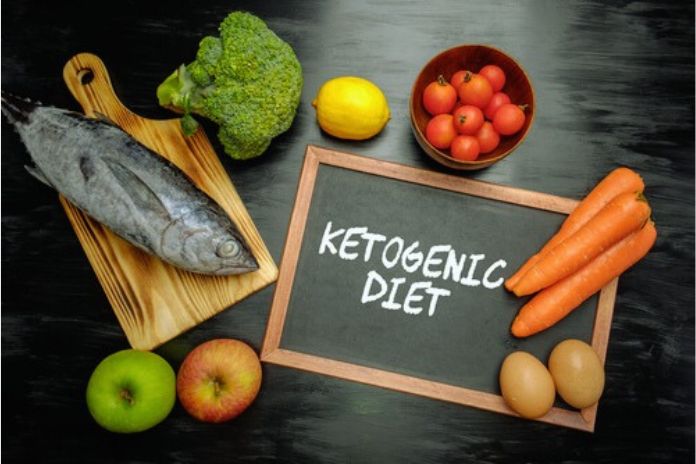Healthy eating is the best strategy to achieve daily body goals. Find out below what a ketogenic diet is, the benefits and how to do a ketogenic diet to lose fat!
The ketogenic diet is a type of low-carb diet which seeks to produce a constant state of ketosis in the body, with the reduction of carbohydrates in the diet; that is, it uses ketone bodies as an energy source and inhibits the release of insulin, to increase the oxidation of fats.
The foods consumed are varied and have a higher amount of proteins and lipids, in addition to other essential nutrients for the proper functioning of the body.
Therefore, it is essential to point out that ketogenic eating is not a carbohydrate-free diet but a nutrient-restricted diet.
For athletes and practitioners of physical activities, the ketogenic diet can be performed even in aerobic resistance, strength and power exercises without interfering with performance. The nutrients provided can help reduce the percentage of body fat and contribute to muscle recovery.
Ketogenic Diet Benefits
Check out some examples of the benefits of the ketogenic diet presented in studies.
- Improvement in weight reduction and fat percentage.
- Blood pressure control.
- Assist in treating type 2 diabetes and obesity in adults and the elderly.
- Decreased cardiovascular risks, with reduced cholesterol.
- Preservation of muscle mass.
- Decreased appetite for certain foods.
How To Do The Ketogenic Diet?
Before starting any diet, you must receive a medical evaluation according to your routine – in this case, identify the best ketogenic menu that meets your daily nutritional needs, considering the amount of food, the nutritional values of the meals and times may vary for each person.
An example of planning a ketogenic diet, with a total daily energy consumption of 1,500 kcal, with the presence of lipid (55%, with 825 kcal), protein (25%, with 375 kcal), carbohydrate (20%, with 300 kcal), fiber (25 to 35 g) and sodium (2,000 mg).
The food is varied and distributed at breakfast, morning snack, lunch, afternoon snack, dinner and supper. Among them are eggs, curd cheese, coffee, avocado, colorful salad (lettuce, carrots, tomato, etc.), beef and chicken, and yogurt and flaxseed.
Ketogenic Diet
As with every healthy diet, you must follow some rules to achieve nutritional benefits on the ketogenic diet.
The body must go through a keto-adaptation period of at least three to four weeks. This is because the body prepares to oxidize fat efficiently, preserving glycogen reserves without decreasing performance.
The final time of the diet may vary for each person, which is why it is essential to follow up with a nutritionist.
Menu
Ketogenic Diet: Allowed Foods
- Olive oil;
- Meat (beef, pork, poultry and fish);
- Coconut oil;
- Eggs;
- Cheese;
- Non-starchy vegetables (green leafy salads).
Ketogenic Diet: Forbidden Foods
- Sugar;
- Alcohol;
- Fruits with a high carbohydrate content;
- Dried fruits (banana, orange and apple);
- Grains (rice, oats, rye, cereal, barley, pasta, pizza, quinoa and wheat);
- Low-fat dairy products;
- Starchy vegetables and tubers (potatoes).
Who Is The Ketogenic Diet Suitable For?
This is mainly indicated for athletes and practitioners of physical activities precisely because it allows fat loss and maintenance of the muscle structure built during exercises.
In addition, studies show positive results in treating neurological diseases such as difficult-to-control epilepsy, infantile spasms, West syndrome, autism, and brain tumors.
Precautions When On The Ketogenic Diet
Dehydration is a point of attention for those following the ketogenic diet since the loss of water provided by carbohydrates can affect the body’s water balance. This indicates 60 to 70 ml of water per kg per day.
Also, remember to talk to your physical trainer to assess the most appropriate training types, aiming to align your diet with the energy expenditure of exercises.

